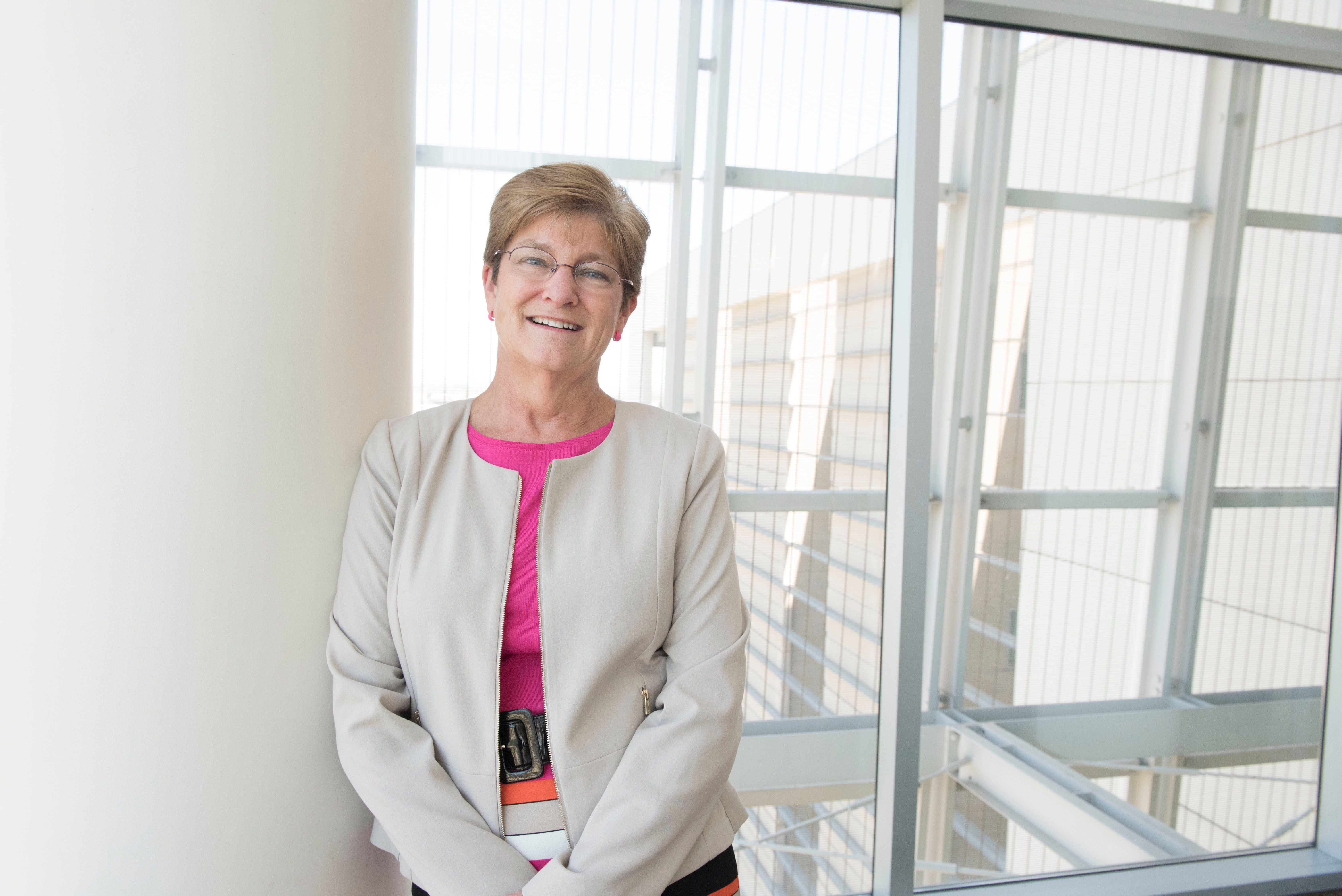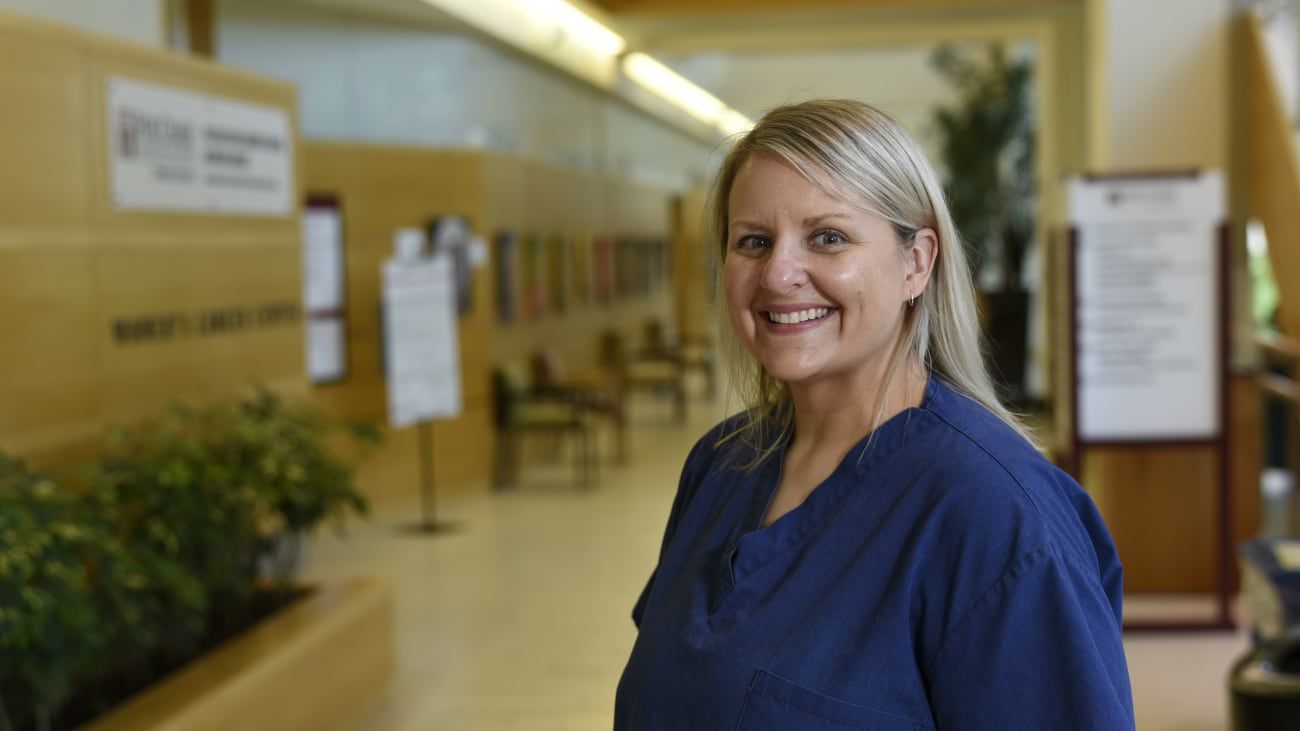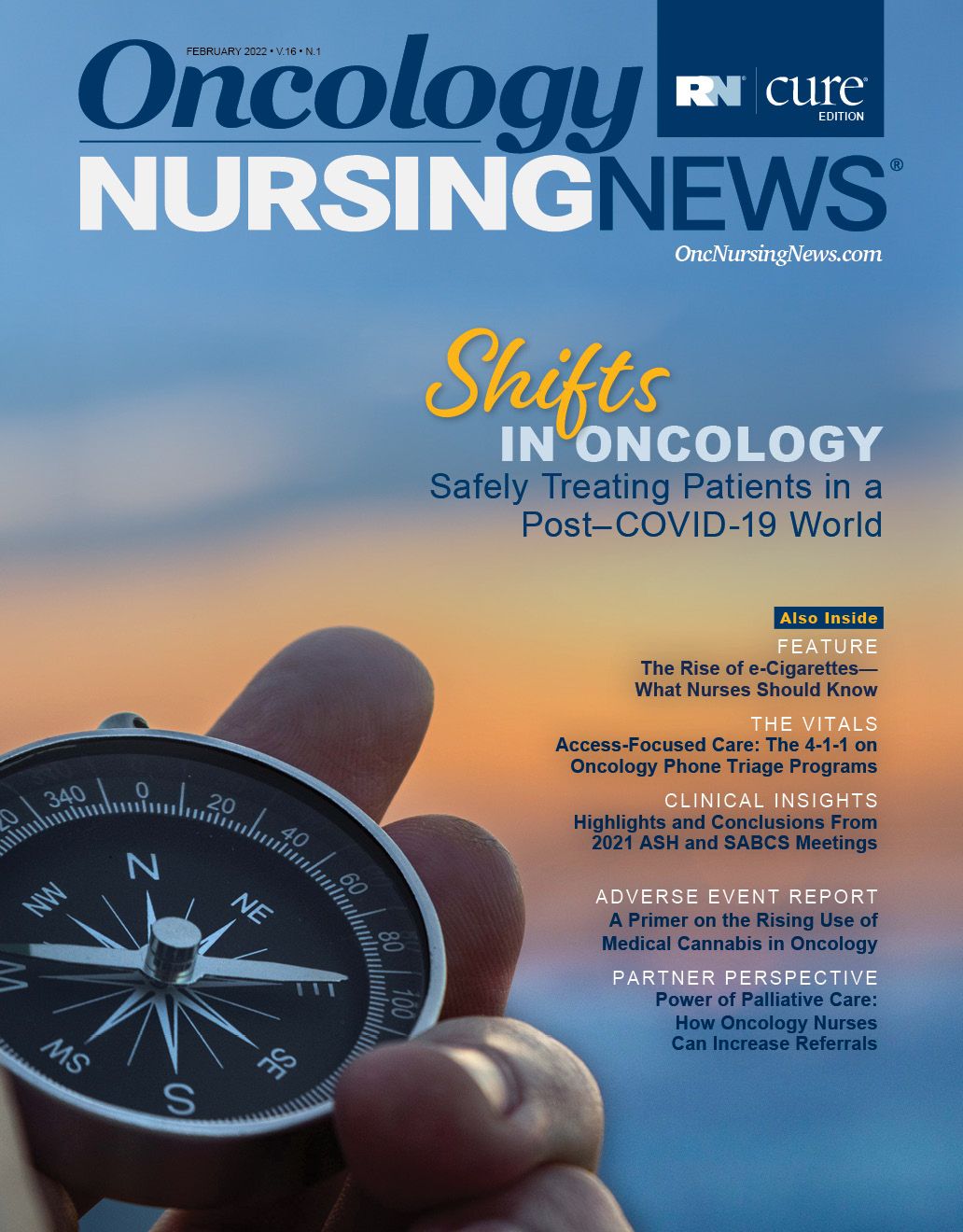Shifts in Oncology: Safely Treating Patients in a Post–COVID-19 World
The COVID-19 pandemic has affected oncology practice in many ways. What will safe treating look like moving forward?
When the COVID-19 pandemic began, oncology units faced a daunting challenge. They had to adapt to providing cancer treatments without sacrificing the health and safety of immunocompromised patients, their families, and oncology staff. Today, as COVID-19 persists and new variants emerge, oncology units have implemented a variety of safety measures that allow them to coexist with the coronavirus, while ensuring the continuum of cancer care.
Anna L. Rodriguez, MSN, MHA, RN, OCN, NEA-BC

“Post pandemic, medical care will never be the same,” said Anna L. Rodriguez, MSN, MHA, RN, OCN, NEA-BC, chief nursing officer and vice president of nursing and patient care services at Fox Chase Cancer Center in Philadelphia, Pennsylvania. "The coronavirus pandemic has highlighted the ability of hospitals to quickly adapt their care models in response to external factors, to ensure a safe environment for staff and patients,” she said.
Rodriguez expects many of the rigorous safeguards implemented to protect patients and staff to remain in place long after the pandemic ends. As one example, she points to the use of technology platforms for virtual staff meetings and patient visits. “Having this flexibility has allowed health care organizations to maintain business operations while allowing for required social distancing as the current conditions dictate, to protect our patients and workforce,” she said. “I believe the efficiencies, work-life balance, and accessibility offered by these platforms will ensure their continued use.”
Telehealth Surges During the Pandemic
At City of Hope, a leading cancer research and treatment hospital near Los Angeles, California, use of the hospital’s telehealth platform skyrocketed during the pandemic. The Hope Virtual platform offered a way for doctors and nurses to safely communicate with patients.
Susan J. Brown, PhD, RN

Susan J. Brown, PhD, RN, senior vice president of patient care services and chief nursing officer at City of Hope, believes that telehealth has replaced many routine oncology appointments by allowing oncology team members to communicate with patients over a secure video platform via smartphone, tablet, or computer.
“Telehealth is used when patients, or someone they are in close contact with, are symptomatic with COVID-19 or the flu, when they have transportation issues, or when they would like a family member to join the appointment from another location,” Brown said. “Prior to the pandemic, we conducted approximately 10% of visits using telehealth. Today, approximately 35% to 40% of patient visits are conducted using telehealth.”
Brown said nurses can safely evaluate patients with cancer using telehealth; they can also manage the adverse effects of treatment, review laboratory and scan results, answer questions, and include family members in the patient’s care. City of Hope plans to expand their telehealth program to include remote chemotherapy support, telegenetics, and much more.
Ensuring Safety for Patients and Staff
In February 2020, UC Davis Medical Center in Sacramento, California, reported the first case of community transmission of COVID-19 in the United States. This led to important changes in the Centers for Disease Control and Prevention (CDC) guidelines for novel coronavirus testing.
Devon Trower, RN, BSN, OCN

Devon Trower, BSN, RN, OCN, a nurse manager in adult infusion at UC Davis Comprehensive Cancer Center, said the entire medical center quickly implemented safety procedures. These included limiting the number of visitors, screening patients and employees for infection daily, maintaining social distancing, mandating masks, and providing ample sanitizer and handwashing facilities.
If an oncology patient tests positive for COVID-19 but is asymptomatic, their doctor will balance the risk of postponing their treatment with their diagnosis. If the patient is exhibiting symptoms, the doctor will determine whether they have recovered enough to undergo treatment.
“We now have several isolation rooms that use negative air pressure where we can administer medications intravenously to oncology patients who have tested positive for COVID-19,” Trower said.
Since the beginning of the pandemic, the oncology unit has been working closely with the hospital’s infection control staff to safeguard the health of patients and oncology team members. “The pandemic has given us all a heightened awareness of infection prevention,” Trower noted. “While we always wore PPE [personal protective equipment] when administering chemo[therapy], our staff now wears N95 or surgical masks all the time.”
Findings from a survey released in March 2021 by the American Society for Radiation Oncology showed that enhanced safety protocols remained widespread at radiation therapy clinics. Masking for patients and staff (99%), social distancing in the clinic (100%), and screening patients and staff for COVID-19 exposure (95%) were nearly universal. Increased sterilization (93%), face shields for staff during procedures (80%), and no-visitor policies (73%) were also common.1
Adjusting to the New Normal
At the beginning of the pandemic,according to Brown, City of Hope quickly began implementing new screening protocols and safety measures recommended by the CDC, as well as guidelines offered by the Oncology Nursing Society. As PPE was only available in limited quantities, City of Hope changed their policy to preserve supplies.
“Staff used to don a mask when entering a hematology patient’s room and throw it away when exiting; it wasn’t unusual to go through 50 to 60 masks in 1 day,” Brown said. “We changed our policy to 1 mask per employee per day and haven’t experienced any increases in infection.”
In fact, in the midst of the pandemic, City of Hope was awarded the prestigious Magnet recognition from the American Nurses Credentialing Center, a distinction bestowed on only 9% of hospitals in the United States. Brown says the pandemic also underscored the importance of supporting and celebrating nursing staff, while ensuring their safety.
“When we presented our nurses with DAISY awards over the past 2 years, we practiced social distancing by decorating golf carts and parading the award winners around our campus,” she explained. “It’s been so well received that we plan to continue the tradition post COVID-19.”
Brown noted that one safety protocol that will probably be altered is the hospital’s visitor policy.
“Inpatients can only have 1 visitor at a time and each visitor must provide proof of full COVID-19 vaccination or a negative [result from a] COVID-19 test taken within the prior 72 hours of each visit,” she said. “Visitors must also be masked at all times.”
Although the practice safeguards the health of patients and staff, Brown noted
the policy has been hard for both nurses and patients.
“Patients miss having their families present and our nurses have realized how much families not only help with patient morale, but also assisting with simple things such as bringing their loved one a glass of water,” Brown said. “Patients have been largely communicating with their extended family via iPads or smartphones.”
Visitor policies have also changed in the outpatient setting. Brown says trained City of Hope escorts meet patients in the lobby and accompany them to infusion and radiation treatments.
“At our main campus, 1 visitor may accompany adult patients and 2 visitors for those under 18 when they meet a physician for the first time and for presurgery anesthesia testing, before and after surgery, and urgent care visits,” she said.
To ensure patients test negative for the disease prior to undergoing surgery, City of Hope also implemented drive-through COVID-19 testing to screen patients.
“If they test positive, the surgery might still be conducted if deemed urgent,” Brown says. “If not, the surgery will be postponed.”
Rebecca Farrell, MSN, RN

Rebecca Farrell, MSN, RN, clinical nurse manager of ambulatory care at Fox Chase Cancer Center, added that interventions to screen and prescreen patients for COVID-19 symptoms prior to their treatments may also become the new normal. These screening tests evaluate for symptoms such as a new or worsening cough within the past 14 days, shortness of breath, fever, and possible COVID-19 exposure.
“Prescreenings and pretesting might become part of our oncology playbook,” she said. “We’ve also seen how team-based nursing care models can be effectively used to care for critical patients during the COVID-19 surge, with nursing staff cross-training in various specialties and departments.”
Some nurses see safety measures such as increased masking and hand-washing stations throughout the hospital remaining.
“While we’ve always been concerned about infection prevention, we’ve seen how these enhanced safety measures taken to prevent the spread of COVID-19 have also squashed the transmission of seasonal influenza and respiratory viruses and maximized safety for our patients,” said Trower.
Reference
Results of a national physician survey by the American Society for Radiation Oncology (ASTRO). ASTRO. Accessed January 10, 2022. https://bit.ly/332MTZm




